- 4 Québec products to add to your recipes
- 10 Ways to Eat More Fruit Every Day
- Brighten up Your Plate with Citrus Fruit
- 12 Fresh Five-Star Salads
- Discover Hot and Sweet Peppers
- Eat More Nuts
- Enjoy Locally Grown Vegetables Year-Round
- Ways to Use Garden Vegetables
- Ketchups, Relishes, Chutneys, Marinades and Aromatic Vinegars
- Cranberries
- Cook with potatoes
- 8 Easy Recipes to Prepare Pumpkin—Differently
- Eat your veggies from the leaves to the roots
- Rediscover Fries!
- Super Salads!
- Eat more chickpeas
- Fruits and vegetables on the barbecue
- Apples on the menu
Citrus Fruits
Brighten up Your Plate with Citrus Fruit

Vitamin- and flavour-packed, thirst-quenching citrus fruit chases away winter blahs and adds zing to summer dishes. This family of sunshine fruit is a big one! Its best-known members include oranges, mandarins, tangerines, tangelos, lemons, limes and grapefruit, but to help you tell them apart, we've brought them all together in a family portrait, so to speak.

Oranges: Bitter to Sweet
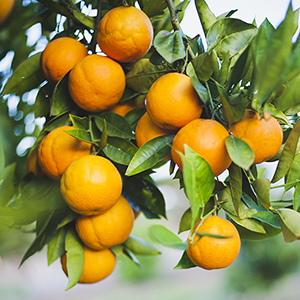
Oranges used to be considered exotic, but today they have become one of the most widely enjoyed fruits in the world.
The bitter orange or Seville orange is often made into marmalade or preserves. The three main varieties of sweet oranges are:
- Valencia oranges, whose sweet, mildly acidic flesh and a very high juice content make them the best juice oranges.
- Navel oranges, with firm, sweet flesh that makes them the most popular eating oranges. Most of these easy-to-peel oranges are seedless.
- Blood oranges, which are amazingly sweet, juicy and fragrant. Because of the distinctive red mottling of their peel and flesh, these oranges are often used as a decoration or garnish.
Orange recipes to try
Mandarins and Tangerines: Cousins under the Skin
Mandarins
Mandarins are small, flattish oranges with a thin, easy-to-peel skin and delicate, flavourful flesh. Some varieties have seeds while others are seedless.
Tangerines
Tangerines are deep orange to almost red in colour, deliciously sweet, and can be used to make juice. The name “tangerine” is derived from Tangiers, the Moroccan port from which most of the fruit was exported for a long time.
Put citrus on the menu
Clementines: Easy-Peeling Lunch Box Favourites
It's so easy to indulge in these small beauties that are bursting with flavour! A hybrid of a mandarin and a bitter orange developed by Father Clément Dozier in Algeria (hence the name), clementines have few or no seeds and are easy to peel and separate into segments, making them popular with children and parents both.
Sweet and savoury clementines
Pomelos and Grapefruit, or Variations on a Theme
Pomelos
Also known as shaddock, pomelos are a large, heavy citrus fruit that can be round or pear-shaped depending on the variety. They have a thick, smooth yellow to green skin, sometimes with a pink blush. The pale yellow or pink flesh can be bitter.
Grapefruit
Grapefruit is thought to have descended from the pomelo through natural mutations. Grapefruit has a thinner peel and flesh varying in colour from pale yellow to dark pink. Some people find grapefruit too astringent, but usually the pinker the flesh, the sweeter the flavour. Grapefruit always makes a beautiful addition to a salad.
Delicious grapefruit recipes
Lemons and Limes for Drinks and Fine Dining
Lemons
Lemons are picked when green, then artificially ripened in storage. Tree-ripened lemons would lose their acid tang, making them too sweet. Peerless as an accompaniment to fish and seafood, lemons can also replace vinegar in many dressings and marinades and are a delicious accent in pies and cakes. Adding a few drops of lemon juice to certain cut-up fruits and vegetables keeps them from discolouring.
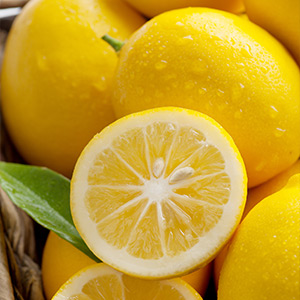
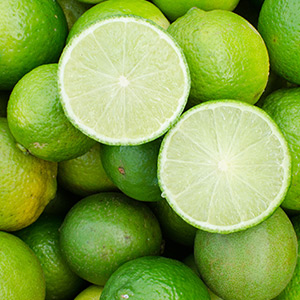
Limes
Though they look very similar to lemons, limes are smaller. With their juicy, acidic, intensely flavoured flesh, limes are an essential ingredient in many cocktails, punches and both savoury and sweet dishes.
Kumquats: Tiny, Tangy Treasures
Kumquat
Tiny and olive-shaped, kumquats are a kind of dwarf orange. Despite having some large seeds, kumquats are entirely edible, from their thin, tender, sweet rind to their acid pulp. They can be candied or used in preserves and fruit salads. With their small size and golden colour, kumquats make a beautiful garnish for any dish.
Discover Tangelos, Oroblancos and Ugli Fruit
Tangelo
Less well known, these fruits reward the adventurous spirits who try them. Tangelos, the result of a cross between a tangerine and a pomelo (the name is a combination of tangerine and pomelo), are easy to peel and have a juicy pulp with a taste all its own.
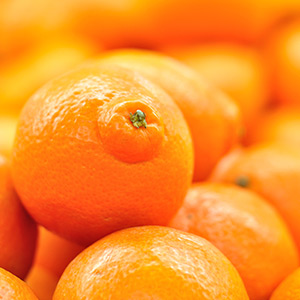
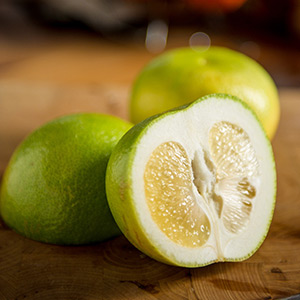
Oroblancos
Oroblancos are a cross between white grapefruit and an acid-free pomelo. They have a thick rind and juicy, intensely sweet pulp.
Ugli Fruit
There is some debate as to the origins of ugli fruit. According to some, it is the result of a cross between a tangerine and a grapefruit; others believe that the bitter orange is part of its parentage. Its pinkish-orange, sweet, mildly acidic flesh is nearly seedless. The name is due to the fruit's rough, puffy, wrinkled skin.
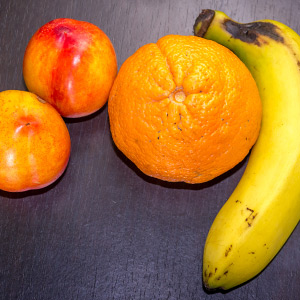
Getting Every Last Drop of Goodness
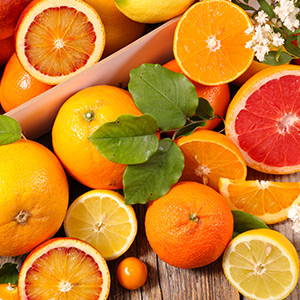
- When buying citrus fruit, look for heavy, firm fruit with a glossy rind. Avoid fruit with soft spots or dull skin.
- The juice and peel of these sunshine fruit freeze well. Whole citrus fruits will keep about a week at room temperature. If they are to be kept longer, they should be stored in a plastic bag with holes in the refrigerator.
- Rinse fruit thoroughly before using, especially if grating or zesting the peel, as many citrus fruits are treated with chemical preservatives.
- When grating or zesting the peel, use only the coloured part and avoid the white pith, which can give foods a bitter taste.
- Citrus fruit gives more juice if left at room temperature for a few hours or if warmed before being pressed. Roll the fruit between your hands for 1 to 2 minutes, cover it with boiling water or zap it in the microwave for a few seconds before juicing.
Using Citrus Juice and Zest
- Like herbs and spices, lemon juice enhances the flavour of most foods and so can replace salt. Try it in salads and soups or on steamed vegetables.
- Make marinades tangier by adding citrus juice. A combination of mandarin juice, soy sauce and ginger, for example, is great for pork and poultry.
- Try grating zest into savoury dishes such as sauces, salad dressings and rice, or sweet recipes such as muffins and cakes.
- Blend citrus zest with softened butter for a delicious spread or flavour-booster for cooked vegetables.
- Before frying or baking, dredge fish in flour mixed with citrus zest and herbs.
Nutritional Value
The nutritional value of citrus fruits is well established. They are particularly rich in vitamin C, folic acid and potassium. Some varieties also provide small doses of vitamin A, magnesium or calcium.
Citrus Fruits Are Weight-Reducing, Acidifying, Calcium-Depleting : True or False?
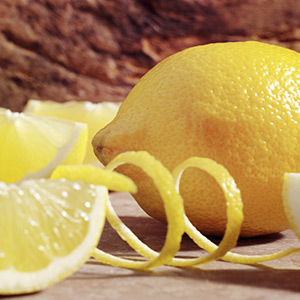
- Grapefruit and lemons do not reduce weight—no food does. However, they are low in calories and an excellent source of vitamins, making them perfect as part of a well-balanced, healthy diet.
- Citrus fruit are not acidifying. Although they have an acidic taste, they have an alkalizing effect.
- The organic acids in citrus fruit help the body absorb calcium.
- Oranges and orange juice are sometimes thought to be stimulants due to their vitamin C content, but this has not been scientifically documented.



























